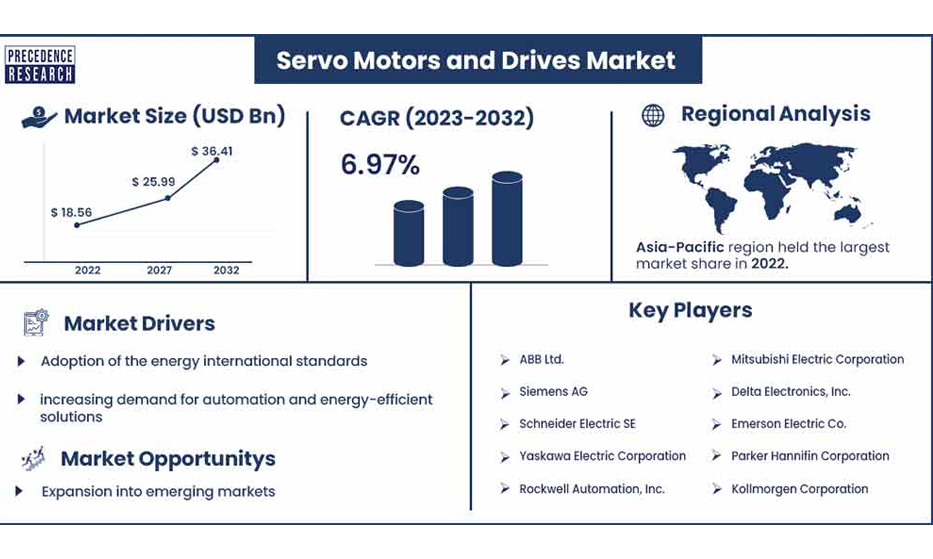 E-mail:mery@ntl-bearing.com
E-mail:mery@ntl-bearing.com
Time: 22nd Feb 2024 Click:161 seen
The global servo motors and drives market size surpassed USD 18.56 billion in 2022 and it is expected to rake around USD 36.41 billion by 2032, poised to grow at a CAGR of 6.97% from 2023 to 2032.

A motion control system consists of several key components, including a servo motor, controller, and feedback element. One crucial element in this system is the servo drive, which plays a vital role in controlling the speed, direction, horsepower, and torque of the servo motor. Meanwhile, DC drives are electric devices commonly used in DC motors to regulate their speed and other performance parameters, resulting in increased energy efficiency and reduced wear and tear on the motor.
As the cost of energy continues to rise and fossil fuels become scarcer, the market for servo motors and drives is expected to see significant growth in the coming years. By utilizing servo motors and drives, businesses can not only improve their performance and productivity but also reduce their environmental impact and energy consumption, making them a smart choice for companies looking to stay ahead in an increasingly competitive market.
Servo motors and drives offer numerous advantages that make them a popular choice for motion control applications in various industries. One of their most significant benefits is their exceptional precision and accuracy. Servo motors provide precise control over speed, position, and acceleration, which is crucial in applications that require high levels of accuracy, such as CNC machines, robotics, and printing presses.
In addition to their precision, servo motors and drives also offer high power density. These motors are compact yet powerful and can produce high torque and power output relative to their size. This feature makes them an ideal choice for applications where space is limited, such as in medical equipment, aerospace, and automotive industries.
Servo motors and drives have a wide range of applications across various industries, thanks to their precision, accuracy, power density, and versatility. Some of the most common industries where these motors find application include robotics, CNC machines, printing presses, packaging machines, and aerospace.
In the field of robotics, servo motors and drives are used to control the movement of robotic arms, grippers, and other components. Their high precision and accuracy enable robots to perform tasks with exceptional accuracy and repeatability, making them ideal for a range of applications such as material handling, assembly, and pick-and-place operations.